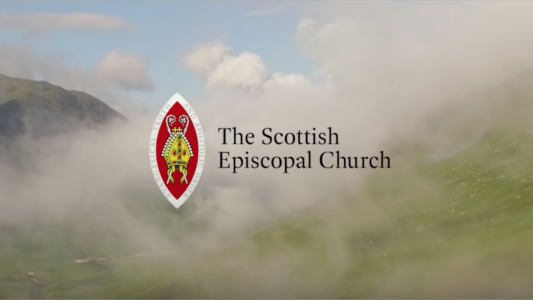Young people are used to inhabiting online spaces where they work together, play together, share, socialize and develop friendships. During the lockdown and in times of social distancing, being in community with our young people means joining them in these online spaces. This is new territory for many adults, and we are unsure of the ground. The following document is a guide to good safeguarding practice for church leaders who are connecting with their young people online.
Key principles
- Keep it legal. Ensure that leaders are PVG-checked for work with young people in the SEC and have received safeguarding training within the last two years. Ensure that children and young people are only using apps and programmes that they are legally the right age to use.
- Be accountable. Use group conversations wherever possible. If one-to-one contact is necessary, have an extra leader as part of the chat who doesn’t take part in conversations, but can ensure there is accountability. Keep a securely-held log of online contact. (Online Contact Log template)
- Be official. Avoid using personal accounts to contact children and young people where at all possible. Use a work phone number or a church/youth group social media account for which at least 2 PVG-checked leaders are Admins.
- Be clear. Online as in person, be aware of what you say and how you say it, as well as how it could be interpreted. Avoid using abbreviations, emojis or icons that could be misleading eg. xx, LOL, heart emoji.
- Give information. Make sure that everyone involved knows what’s going on. For children and young people, share a link to Childline (Tel: 0800 1111) and to the contact details for your church’s Safeguarding Coordinator. This ensures that they can report any concerns about the online behaviour of a youth leader. Let parents know how you will be connecting online with their young people, and what safeguarding measures (such as Privacy settings) are in place, before asking for signed consent. Signpost the NSPCC resources or CEOPs Think you know for parents so they are fully informed on how each social media app works.
- Get consent. It is recommended that you issue consent forms specifically for online communication (see Online Consent template here). Remember that photo consent guidelines still apply (see consent form here).
Guidance on individual online platforms and social media apps
- If emailing an individual young person, you should have signed parental consent. CC the parent.
- When emailing multiple young people/parents, put individual email addresses into the BCC section so they won’t be able to access each other’s addresses. CC a second leader. Alternatively, send from an email address that multiple leaders have access to.
Text/WhatsApp/Direct Message
- Leaders should only have children’s and young people’s mobile numbers if they have been given on the consent form as a means of communication.
- Texting should only be for communication, not conversation. It can be used to remind young people about meetings and events, or for sending a general encouragement e.g. “Praying for everyone taking exams this week!” If it turns into conversation, make every effort to end it as soon as possible and let another leader know this has happened.
- You should avoid texting one-on-one where possible. A better option is to use WhatsApp or Facebook Messenger in order to set up a group conversation. This should include two or more leaders.
- If a young person contacts you and appears to need urgent help or appears to be at immediate serious risk, contact 999, social services or other relevant services. Let the Diocesan/Provincial Protection Officer know about the situation. If they do not seem to be at immediate risk, contact your Church leader or Safeguarding Coordinator as soon as possible.
Zoom
- Share the time/place/purpose of meeting with parents and your Church leader.
- Make sure that the ‘Waiting Room’ feature is activated, which ensures that no one enters the meeting unless the host admits them. When meeting IDs are shared publicly (which is often unavoidable when we want to invite all our young people to join an online worship or activity) there is a risk of gatecrashing and inappropriate behaviour by members of the public: the ‘waiting room’ feature means that only people known to the host will be admitted.
- Use screen sharing controls: enable sharing when required e.g. for sharing written prayers, but limit to prevent young people sharing random or inappropriate content.
- Do not allow anyone to share screenshots of Zoom meetings, for example on your church’s Facebook page. Participants are identified by their photograph plus full name, which contravenes the SEC’s Conditions of Use for photo consent.
- There is more detailed information about safe uses of Zoom available here. The advice is aimed at teachers, but widely applicable to anyone working with young people online.
- A Facebook Page is useful as a church notice board, to share news and advertise events publicly. A Facebook Group is a good way to have safe communication – make sure that two PVG-checked youth leaders are appointed as Admins and that the privacy settings are set to ‘Private’, so no one can join without an Admin’s permission and only those within the Group can post, comment etc.
- Any communications made via posts should avoid tagging people or using full names. Generally, posts should be announcing events, wishing people luck with exams etc. If communicating via a closed (private) Group, then posts asking questions can also be appropriate. If asking for Prayer requests, ensure you set boundaries around this.
- An official church Page should take every effort not to comment on, like or share any posts by someone who is under 18.
- It is not appropriate to include a parent in a Facebook group with children, even if their child is not on Facebook and they want to be able to pass on information. If they want to be part of the group, they need to be PVG-checked.
- Your personal Facebook account should have all privacy settings set so that a young person cannot access your photos, posts etc, and you have to approve requests to friend/follow you. Do not send friend requests to individual young people.
- An official Twitter account can be a useful public noticeboard for your organisation, but make sure that two PVG-checked leaders are appointed as Admins. This ensures accountability, especially when Direct Messages are received by the account.
- You can create a Twitter page to be private, with the owner of the page having to approve people viewing it.
- An official church account should take every effort not to follow anyone who is under 18, or comment, like or retweet any of their posts.
- Instagram is an image-sharing platform, with options to add text and comments. Many young people use Instagram, and it can be a great platform for your church or youth group to advertise events/share about events afterwards. People are also able to follow the account without you having to follow back.
- You can only share images of young people if you have signed consent from their parents.
- While it is not a place for group conversation, there is still a Direct Message function and so it is important that at least two leaders have login details for the account in case a young person contacts it.
- You can create a page to be private, with the owner of the page having to approve people viewing it.
- An official church or youth group account should make every effort not to follow anyone under 18, or like or comment on any posts they make.
- WhatsApp provides an alternative to texting. It is possible to create group chats, which can be a useful way of communicating with a group. However, your mobile number is visible to everyone in a group chat, so this is only to be used if there are two leaders in the chat, and both of them have a non-personal phone number i.e. a church-issued mobile if you are lay employees/volunteers.
- Young people in the group should have consent from their parents or guardians to be a part of the group and their consent for their phone number being added to a WhatsApp conversation. Make sure parents are fully informed about what the group is for and what you are communicating.
Microsoft Teams
- Microsoft Teams is used to bring people together for meetings, conversations and shared projects. It requires a Microsoft 365 account with the appropriate Microsoft365 license. Microsoft Teams cannot be led from a personal account, but anyone with a regular email account can participate as a guest in Teams, with full access to team chats, meetings and files.
- There are two different channels: standard (available and visible to everyone) and private (conversations with a specific audience). If your organisation has a business account, Microsoft Teams could be a good option for connecting with your young people via a private channel.
Snapchat
- Snapchat is a form of social media that allows people to send photos, videos or messages to other people on their friend list. These photos and messages disappear after being viewed (although screenshots can be saved). There is also the function to add to a “story” which is viewable by people on your friends list for up to 24 hours. It is also possible to have a public profile, where anyone can view your story.
- This is not an appropriate platform for leaders to communicate with children and young people.
YouTube
- YouTube is a video sharing platform with a comments section where people are able to interact with each other.
- YouTube is not suitable for use as a medium for communication.
- If you’re producing videos (only with signed consent on behalf of those being filmed) a YouTube channel is a good place to host them since you can make them private/unlisted so only people with the link can see them.
- If you have a personal YouTube account, be aware that it can be found, so be mindful of content you create.
For more detailed guidance, see the Risk assessment: online communication with young people.
–
Sources: UK Government’s Practical Guide to Child Safety Online; Methodist Church online safeguarding resources; Social Media: the Basics for Youth Work from YouthLink Scotland; ‘Safeguarding young people during the Covid-19 pandemic: A guide for designated safeguarding leads in voluntary youth organisations’ by Tom Burke, Clair Cooke and Isabelle King May 2020; Youth for Christ safeguarding online; Times Educational Supplement ‘Coronavirus: Teachers warned of ‘zoombombing’ risk’ 02.04.20; Diocese of Ely (Church of England) Youth Resources during coronavirus.







